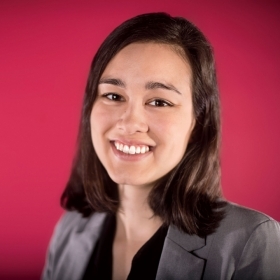Justin Armstrong holds a dual appointment as lecturer in writing and anthropology. He’s involved in “spectral ethnography”—the anthropology of people, places, and things that have been abandoned “to the flows of time and space.”
How did you become interested in abandoned places?
I’ve always been fascinated by the process and outcome of abandonment. And a lot of that comes from how I grew up. I’m Canadian, and my parents raised us in the woods, in really far, remote northern Ontario. My dad was a draft dodger, and he came to Canada and married my mom, and then they, of course, were part of the back-to-the-land movement. They bought 100 acres up in northern Ontario, and that’s where we grew up—just totally off the grid till I was 18. And then my parents left that place, and eventually got divorced, and now it’s just completely abandoned. If someone was hiking and they came across this completely abandoned homestead, what kind of narrative would they be able to construct out of it? How do you construct narratives in the absence of people? So I’m an anthropologist of the presence of absence.
What brought you to Wellesley?
I’ve had a kind of an unusual trajectory. I wasn’t a good high-school student. After high school, I worked midnights in a doughnut shop and played in bands, and didn’t really know what I was going to do. I spent awhile traveling around the U.S. in my car. And then I met my wife, and she was going to school down in southern Ontario. And I was like, well, maybe I’ll just go to school down there. I started on the anthropology track. My wife, Heather Mattila, who does honeybee research—that’s how most people know her, as the honeybee person—got a job at Wellesley and so we moved here. I was finishing my dissertation. I wrote a big chunk of it in the Clapp Library before I was part of the faculty. We don’t have liberal arts colleges in Canada, and I wish that we did. I love this model. It’s such a great idea that you can get a really comprehensive view of knowledge and education, and then also study a particular discipline.
Do you have a favorite spot on campus?
I really like the College Club. And a lot of people don’t like it. To me, the architecture is really fascinating. It’s a perfect mid-century-modern building. And it seems almost preserved, in a way.
What else are you working on?
I wrote a novel over the last several years when I was on my fieldwork. I’m hoping it’ll be out by the end of the year; it’s called Wyomings, with an S.





We ask that those who engage in Wellesley magazine's online community act with honesty, integrity, and respect. (Remember the honor code, alums?) We reserve the right to remove comments by impersonators or comments that are not civil and relevant to the subject at hand. By posting here, you are permitting Wellesley magazine to edit and republish your comment in all media. Please remember that all posts are public.